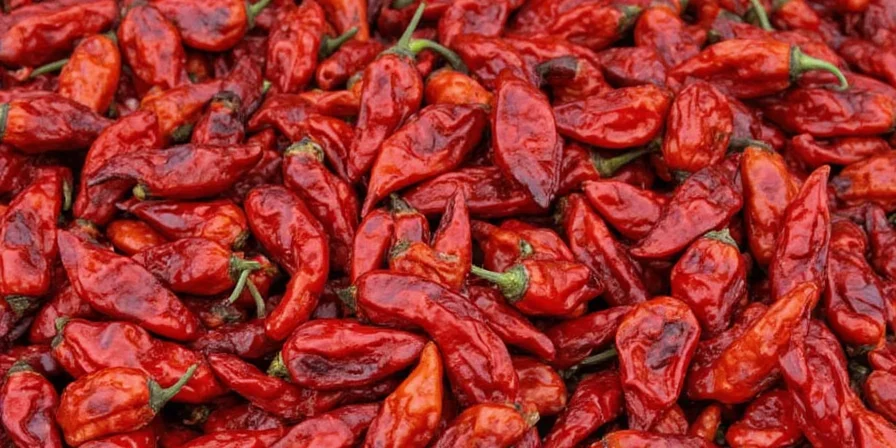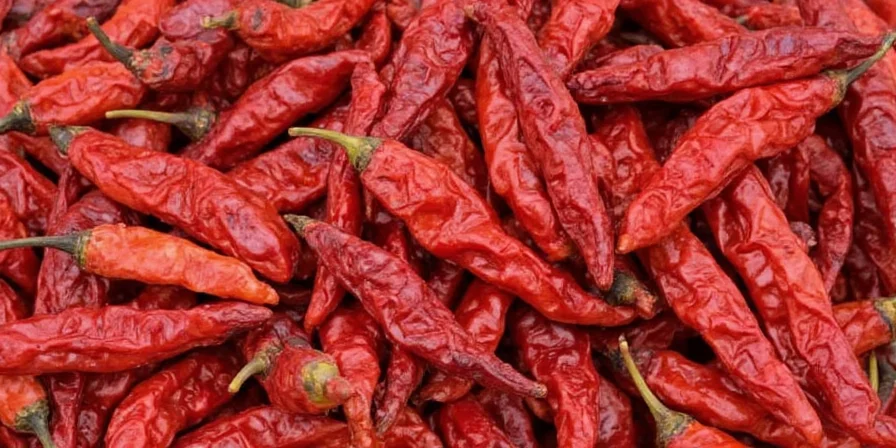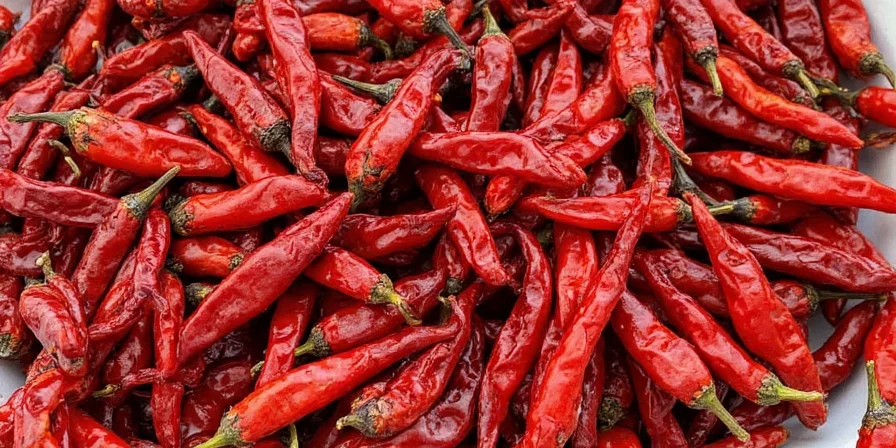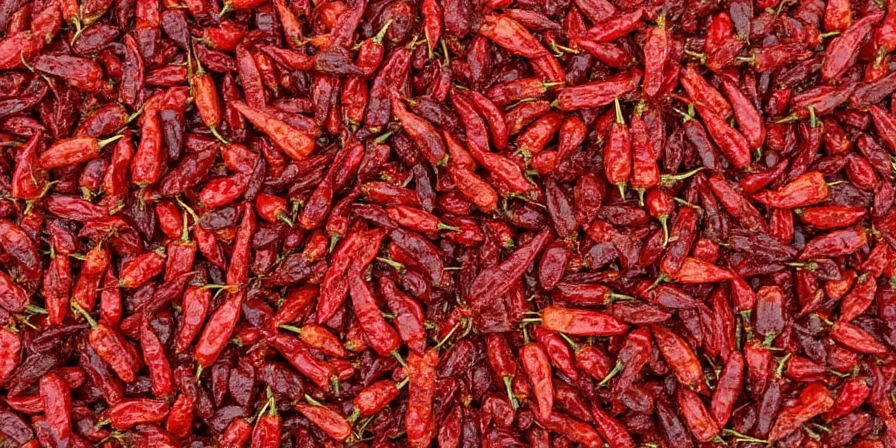Hot, Smoky & Spicy: A Wild Ride Through the Wonderful World of Dried Chiles!
If you've ever wandered through the spice aisle and stared at those mysterious little wrinkly red peppers like they were written in hieroglyphics — fear not! You're not alone.
Welcome to your ultimate guide to types of dried chiles. Whether you're a professional chef or someone who just wants to make taco night more exciting than usual (we see you), this is your roadmap to spice paradise.
Contents
- What Exactly Is a Dried Chile?
- The Heat Spectrum: Mild to Nuclear
- Top 10 Dried Chiles Every Spice Lover Should Know
- Flavor Profiles: Beyond the Burn
- Pro Tips for Cooking with Dried Chiles
- How to Store Your Spice Treasures
- Final Thoughts: Spice Up Your Life
What Exactly Is a Dried Chile?
Dried chiles are fresh peppers that have been sun-dried or dehydrated to intensify their flavors and preserve them for longer use. They come in all shapes, sizes, and heat levels — from sweet and smoky to fiery and face-melting.

In many cuisines around the world, especially Mexican, Indian, and Middle Eastern, dried chiles are the backbone of flavor. They can be used whole, ground into powder, or rehydrated and blended into sauces. Think of them as nature's seasoning packets — just way cooler and more dangerous if misused.
The Heat Spectrum: Mild to Nuclear
Chile peppers get their kick from capsaicin — a compound that makes your mouth tingle, eyes water, and soul question life choices (if you go too far). The Scoville scale measures this heat, and here’s how it breaks down:
| Heat Level | Scoville Units | Common Examples |
|---|---|---|
| Mild | 0–1,000 | Poblano, Ancho, Guajillo |
| Medium | 1,000–30,000 | Mulato, Cascabel, Serrano (fresh/dried) |
| Hot | 30,000–100,000 | Chipotle, Pasilla, Pequin |
| Very Hot | 100,000–500,000 | Hatch, Thai Bird, Habanero (dried) |
| Nuclear | 500,000+ | Ghost Pepper (Bhut Jolokia), Carolina Reaper (dried) |
Top 10 Dried Chiles Every Spice Lover Should Know
Let’s dive into the crème de la crème of dried chiles. These are the stars of soups, salsas, stews, and street tacos worldwide. Buckle up, it’s about to get spicy.
- Ancho: Dried poblano pepper. Sweet, fruity, with hints of raisin and cocoa. Perfect for moles and enchilada sauces.
- Guajillo: Medium-hot with bright berry notes and a subtle floral aroma. Often used in adobo sauces.
- Pasilla: Also known as Negro, it brings dark fruit, licorice, and earthy tones. Ideal for complex mole sauces.
- Mulato: Darker sibling of Poblano. Offers chocolate, coffee, and tobacco notes. Great in slow-cooked dishes.
- Cascabel: Small and round. Has nutty undertones with moderate heat. Tasty in salsas and soups.
- Chipotle: Smoked and dried jalapeño. Intense smokiness with medium heat. Famous for adding depth to sauces and marinades.
- Arbol: Thin and fiery. Adds sharp heat and slight grassiness. Common in hot sauces and broths.
- New Mexico/Hatch: Named after the Hatch Valley. Earthy, moderately spicy. Perfect for green chile sauces.
- Thai Bird: Tiny but vicious. Often crushed into curry pastes or used in spicy stir-fries.
- Piquin: Super small, super hot. Bright citrusy notes and volcanic heat. Best used sparingly.

Flavor Profiles: Beyond the Burn
The magic of dried chiles isn’t just about heat — it’s about complexity. Each one has a unique blend of sweetness, smokiness, earthiness, and bitterness. Here’s a breakdown:
| Chile | Main Flavors | Best For |
|---|---|---|
| Ancho | Fruity, Raisin, Cocoa | Mole, Enchiladas |
| Guajillo | Berry, Floral, Tart | Adobo, Marinades |
| Pasilla | Plum, Licorice, Earthy | Complex Sauces |
| Mulato | Chocolate, Coffee, Tobacco | Slow Cooked Dishes |
| Cascabel | Nutty, Toasted | Salsas, Soups |
| Chipotle | Smoky, Woody | BBQ, Marinades |
| Arbol | Grassy, Sharp | Broths, Oils |
| New Mexico | Earthy, Vegetal | Green Chile Sauce |
| Thai Bird | Spicy, Citrusy | Curries, Stir-Fries |
| Piquin | Peppery, Citrusy | Condiments, Garnishes |
Pro Tips for Cooking with Dried Chiles
Now that you know your Guajillos from your Ghost Peppers, let’s talk technique. Because yes, there is an art (and some science) to using dried chiles effectively.
- Toast ‘Em First: Lightly dry-toasting in a skillet brings out deeper aromas. Don’t walk away — they burn easily!
- Rehydrate Right: Soak in hot water for 20–30 minutes until soft. Add a splash of vinegar or citrus for extra zing.
- Remove Seeds for Less Heat: Most capsaicin lives in the seeds and membranes. Want less fire? Take ’em out.
- Use Oil Wisely: Some recipes call for soaking in oil. This adds richness and preserves flavor.
- Blend Like a Pro: Use a high-speed blender when making pastes or sauces. Strain if needed for silkier texture.
- Don’t Fear the Powder: Many dried chiles are sold ground. Make your own for fresher flavor!
How to Store Your Spice Treasures
Dried chiles aren’t immortal, but with proper care, they’ll stick around and still pack a punch months later. Here’s how to keep them fresh:
- Airtight Containers: Keep them sealed in glass jars or zip-lock bags to prevent moisture and air exposure.
- Dark Place: Sunlight is the enemy. Store in a cool, dark cupboard.
- Freeze It: Yes! Whole dried chiles can be frozen indefinitely without losing flavor. Just pull them out as needed.
- Label Everything: If you’re a chile collector (you know who you are), label each container so you don’t accidentally turn dinner into a dare.

Final Thoughts: Spice Up Your Life
Dried chiles are like the secret agents of the culinary world — quiet in appearance, but packing powerful punches of flavor and heat. Whether you’re simmering a rich mole or jazzing up a bowl of black beans, these little peppers can take your cooking from “meh” to “muy bien!”
So next time you spot those leathery little guys at the store, don’t just pass by. Pick one up, read its bio (this blog helps), and give it a whirl. Who knows? That tiny dried guajillo might just become your new kitchen BFF.











 浙公网安备
33010002000092号
浙公网安备
33010002000092号 浙B2-20120091-4
浙B2-20120091-4